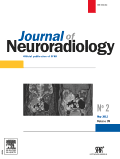
JOURNAL OF NEURORADIOLOGY
Scope & Guideline
Connecting researchers to the pulse of neuroradiology.
Introduction
Aims and Scopes
- Neuroimaging Techniques:
The journal emphasizes the development and application of various neuroimaging modalities, including MRI, CT, PET, and advanced imaging techniques such as diffusion tensor imaging and functional MRI, to enhance diagnostic accuracy and therapeutic interventions. - Interventional Neuroradiology:
There is a strong focus on interventional techniques in neuroradiology, including endovascular procedures for treating conditions such as aneurysms and strokes, highlighting advancements in device technology and procedural methodologies. - Clinical Applications and Outcomes:
Research published often investigates the clinical implications of imaging findings, including outcomes of treatments for stroke, tumors, and neurovascular diseases, thereby bridging the gap between imaging and clinical practice. - Artificial Intelligence and Machine Learning:
The journal explores the integration of AI and machine learning in neuroimaging, focusing on automated image analysis, predictive modeling, and enhancing diagnostic processes. - Neurovascular Pathologies:
A significant portion of the research addresses various neurovascular conditions, including stroke, aneurysms, and vascular malformations, contributing to the understanding of their imaging characteristics and management strategies.
Trending and Emerging
- Multimodal Imaging Approaches:
There is an increasing trend towards utilizing multimodal imaging techniques that combine various neuroimaging modalities (e.g., PET-MRI, CT perfusion) to provide a more comprehensive understanding of neurological conditions. - Neurovascular Research and Interventions:
Research focusing on neurovascular disorders, particularly the management and outcomes of interventions for conditions like aneurysms and acute ischemic stroke, is gaining momentum, reflecting the critical nature of timely and effective treatment. - Artificial Intelligence and Radiomics:
The application of AI and radiomics in neuroimaging is on the rise, with studies exploring machine learning algorithms for automated diagnosis, predictive analytics, and improving image quality, indicating a significant shift towards data-driven approaches. - Neurodegenerative Disease Imaging:
Emerging themes include the use of advanced imaging techniques to study neurodegenerative diseases, such as Alzheimer's and multiple sclerosis, focusing on early diagnosis, monitoring progression, and understanding underlying mechanisms. - Pediatric Neuroimaging:
An increasing number of studies are addressing pediatric populations, focusing on the unique challenges and imaging characteristics associated with neurological disorders in children, reflecting a broader commitment to diverse patient demographics.
Declining or Waning
- Traditional Imaging Modalities:
There is a noticeable decrease in studies centered solely on traditional imaging modalities without the integration of advanced techniques. This shift indicates a growing preference for multimodal approaches that provide comprehensive diagnostic information. - Basic Imaging Techniques for Common Conditions:
Research focusing on basic imaging assessments for common neurological conditions, such as simple CT scans for headaches or routine MRI for non-specific symptoms, seems to be less frequent as the field moves towards more specialized and technologically advanced imaging solutions. - Historical Case Studies:
The frequency of articles discussing historical case studies or retrospective analyses without significant technological or methodological advancements has decreased, suggesting a preference for current, innovative research that offers new insights into neuroradiology.
Similar Journals

EUROPEAN JOURNAL OF RADIOLOGY
Advancing Imaging Excellence in HealthcareThe European Journal of Radiology, published by Elsevier Ireland Ltd, is a premier peer-reviewed journal in the fields of radiology, nuclear medicine, and imaging. Established in 1981, it has carved a significant niche within the academic community, showcasing innovative research that enhances medical imaging practices and improves patient care. With an impressive ranking in the Q1 category for both Medicine (miscellaneous) and Radiology, Nuclear Medicine, and Imaging in 2023, the journal is recognized globally for its commitment to advancing scientific knowledge and improving imaging methodologies. The journal's Scopus ranking of #60/333, placing it in the 82nd percentile, underlines its reputation for high-quality research and scholarly contributions. While traditionally a subscription-based journal, it continually evolves to meet the demands of the academic landscape, aiming to bridge the gap between research and clinical practice. Researchers, healthcare professionals, and students alike can benefit from exploring its extensive archives and current publications, which are curated to foster education and innovation in the medical imaging domain.

European Journal of Hybrid Imaging
Exploring the Future of Imaging in Medicine and ScienceEuropean Journal of Hybrid Imaging, published by SpringerNature, stands as a pivotal platform for scholarly discourse in the rapidly evolving fields of hybrid imaging technologies and methodologies. Since its inception in 2017, this open access journal has significantly contributed to the interdisciplinary interface of biophysics, computer science, molecular medicine, and radiology. With its current standing in the Q2 and Q3 quartiles across various categories, it provides valuable insights and research outputs pertinent to both academic and clinical practitioners. The journal's rigorous peer-review process ensures the highest standards of scholarly integrity, while its open access format promotes global accessibility and encourages collaborative research efforts. Covering a diverse range of topics pertinent to hybrid imaging, the journal serves as an essential resource for researchers, professionals, and students alike, fostering innovation and knowledge exchange within the scientific community.
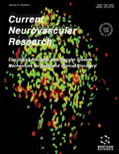
CURRENT NEUROVASCULAR RESEARCH
Exploring the Intersections of Neuroscience and Vascular HealthCURRENT NEUROVASCULAR RESEARCH is an esteemed peer-reviewed journal published by Bentham Science Publishers Ltd, focusing on the intricate relationships within the realms of cellular and molecular neuroscience, developmental neuroscience, and neurology. With an ISSN of 1567-2026 and an E-ISSN of 1875-5739, this journal has been contributing to the field since its inception in 2004 and is poised to continue through 2024. As a resource dedicated to disseminating innovative research findings, CURRENT NEUROVASCULAR RESEARCH is recognized within Category Quartiles as Q3 in multiple fields, including Neurology (clinical) and Developmental Neuroscience. Although classified in the Q4 category for Cellular and Molecular Neuroscience, the journal maintains a crucial role in fostering academic discourse and advancing our understanding of neurovascular dynamics. Researchers, professionals, and students will find valuable insights in this journal, offering access to a diverse range of studies that highlight cutting-edge developments in the field.

Journal of NeuroInterventional Surgery
Pioneering New Pathways in NeuroInterventional Surgery.The Journal of NeuroInterventional Surgery, published by the BMJ Publishing Group, stands at the forefront of advancing knowledge in the fields of neurointerventional procedures, neurology, and surgical techniques. With an impressive impact factor reflective of its high-quality contributions, this journal occupies a prestigious position within the Q1 category across multiple domains: Medicine (miscellaneous), Neurology (clinical), and Surgery, ranking 11th in Medicine Surgery and 47th in Neurology Clinical out of their respective categories per Scopus metrics. Since its inception in 2009, it has provided an essential platform for researchers, clinicians, and students to disseminate innovative findings and engage with groundbreaking developments in neurointerventional practices. As a prominent publication in the United Kingdom, located at British Med Assoc House, it is committed to open communication within the community, fostering collaboration, and setting the stage for future innovations in patient care and outcomes.

Japanese Journal of Radiology
Elevating Radiology Research to New HeightsThe Japanese Journal of Radiology, published by SPRINGER, serves as a premier platform for disseminating cutting-edge research and clinical advancements in the fields of radiology, nuclear medicine, and imaging. With an ISSN of 1867-1071 and E-ISSN 1867-108X, this journal has established itself as a vital resource for practitioners, researchers, and students alike. Renowned for its high-quality peer-reviewed articles, it currently enjoys a respectable impact factor within the Q2 category of Scopus rankings, placing it in the 69th percentile among 333 journals in its field. The journal has seen consistent convergence of research from 2009 to 2024, further underscoring its commitment to advancing the understanding of radiological practices. Importantly, the journal offers Open Access options to facilitate widespread dissemination of knowledge, ensuring that vital research reaches its audience without barriers. Addressed in Japan, the Japanese Journal of Radiology plays a critical role in enhancing the global discourse on medical imaging, making it an essential resource for anyone engaged in this dynamic field.
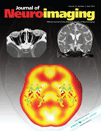
JOURNAL OF NEUROIMAGING
Fostering Collaboration in Neuroimaging ExcellenceJOURNAL OF NEUROIMAGING, published by Wiley, serves as a premier platform for advancing knowledge in the fields of neurology, radiology, and clinical imaging. With its ISSN 1051-2284 and E-ISSN 1552-6569, the journal spans influential research dating from 1991 to 2024, making it an essential resource for professionals and researchers engaged in neuroimaging. It holds a commendable position in Quartiles—ranking Q2 in both Medicine (miscellaneous) and Neurology (clinical), and Q1 in Radiology, Nuclear Medicine, and Imaging as of 2023. The journal's standing in the Scopus rankings, particularly its percentile ranks of 68th and 60th in their respective categories, underscores its impact within the academic community. Although it does not offer open access, it remains pivotal for disseminating high-quality, peer-reviewed research that enriches the understanding of neuroimaging techniques and their clinical applications. The JOURNAL OF NEUROIMAGING is an invaluable resource for scholars seeking to contribute to the evolving landscape of medical imaging and neurodiagnosis.
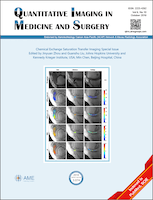
Quantitative Imaging in Medicine and Surgery
Empowering Clinicians with Advanced Imaging KnowledgeQuantitative Imaging in Medicine and Surgery is an esteemed journal dedicated to advancing the field of medical imaging through rigorous research and innovative methodologies. Published by AME PUBLISHING COMPANY in China, this journal has established itself with an impressive Q2 quartile ranking in the field of Radiology, Nuclear Medicine, and Imaging, reflecting its dedication to high-quality research. With a comprehensive focus on quantitative imaging techniques, the journal covers a wide range of topics including image analysis, imaging biomarkers, and the integration of imaging in clinical practice, promoting collaboration between imaging specialists and clinicians. As an open access journal, Quantitative Imaging in Medicine and Surgery ensures that its articles are freely accessible, facilitating the dissemination of knowledge to a broader audience. With a commitment to fostering innovation in imaging science, this journal serves as an invaluable resource for researchers, professionals, and students alike, ultimately aiming to improve patient outcomes through advanced imaging strategies and technologies.

Journal of the Belgian Society of Radiology
Fostering Collaborative Research in RadiologyThe Journal of the Belgian Society of Radiology, published by UBIQUITY PRESS LTD, is a pivotal resource in the field of radiology, nuclear medicine, and imaging. With an ISSN of 2514-8281 and E-ISSN of 2514-8281, this open access journal has been dedicated to fostering the dissemination of high-quality research since its establishment in 2010. Distributed from the United Kingdom, it offers a platform for innovative studies, case reports, and reviews that contribute to the advancement of radiological sciences. Despite its current Q4 category ranking within Scopus, the journal plays a critical role in sharing essential findings with a community of over 1,200 professionals and students eager to stay abreast of emerging trends and technological advancements in imaging. By enabling unrestricted access to its publications, the journal encourages collaborative research and knowledge exchange that transcends geographic boundaries, solidifying its importance for both established researchers and emerging scholars in the discipline.
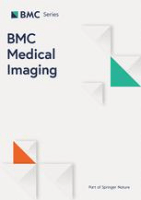
BMC MEDICAL IMAGING
Shaping Tomorrow's Imaging Solutions for Better Patient Care.BMC Medical Imaging is a premier open-access journal dedicated to advancing the field of radiology, nuclear medicine, and imaging technologies. Published by BMC in the United Kingdom, this journal serves as a vital resource for researchers, clinicians, and students, fostering a collaborative environment for sharing innovative findings and methodologies in medical imaging. With a commendable impact factor and an impressive Scopus ranking within the top 35% of its category, BMC Medical Imaging provides a platform for high-quality research to be disseminated widely and freely since its inception in 2001. The journal aims to cover a diverse array of topics, from advanced imaging techniques to their clinical applications, enhancing the understanding and effectiveness of diagnostic practices. By contributing to the body of knowledge and facilitating open access to research, BMC Medical Imaging plays a pivotal role in shaping the future of medical imaging and improving patient care.

EUROPEAN RADIOLOGY
Advancing the Frontiers of Medical ImagingEUROPEAN RADIOLOGY, published by SPRINGER, stands as a prestigious international journal in the field of radiology, nuclear medicine, and imaging, with an impressive impact factor that underscores its significance among peers. With an ISSN of 0938-7994 and an E-ISSN of 1432-1084, this journal provides a platform for cutting-edge research and advancements in medical imaging from 1991 to 2024. Recognized as a Q1 journal in both general Medicine and the specialized Radiology category by 2023, EUROPEAN RADIOLOGY ranks an impressive #17 out of 333 in its field according to Scopus, placing it in the 95th percentile. While it does not currently offer Open Access options, the journal remains essential reading for researchers, professionals, and students striving to stay at the forefront of developments in diagnostic imaging and related technologies. By contributing to a comprehensive understanding of radiological practices, EUROPEAN RADIOLOGY plays a crucial role in shaping the future of medical diagnosis and patient care.